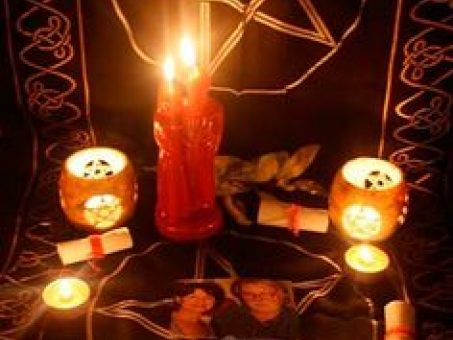A Detailed Guide on How to Join a Masonic Lodge Near You
A Detailed Guide on How to Join a Masonic Lodge Near You
Blog Article
Discovering the Mysteries of the copyright: What You Required to Know
The copyright, a term commonly shrouded in intrigue and conflict, represents a complicated tapestry of historic reality and modern-day misconception. Established in the late 18th century, this secret society was at first rooted in the Enlightenment's suitables yet has considering that become associated with conspiracy theory theories about elite control (benefit of joining freemason).
Beginnings of the copyright
The origins of the copyright are soaked in a mix of historic intrigue and ideological fervor. Established in 1776 in Ingolstadt, Bavaria, by Adam Weishaupt, the group was originally formed as a secret culture focused on advertising Knowledge suitables such as reason, secularism, and the splitting up of church and state. Weishaupt, a professor of canon law, looked for to challenge the dominating authority of the church and state, which he considered as overbearing institutions stifling intellectual and personal flexibility.

Trick Figures and Members
Who were the essential figures that formed the copyright's very early influence and direction? The Bavarian copyright, established in 1776 by Adam Weishaupt, emerged as a response to the oppressive societal structures of the time.
An additional significant number was Johann Gottlieb Fichte, a prominent philosopher whose concepts on nationalism and education and learning reverberated with the copyright's objectives. Although Fichte was not an official member, his thoughtful foundations affected the group's ideology. Additionally, figures like the writer and theorist Johann Wolfgang von Goethe were linked with the more comprehensive intellectual activities of the moment, although their direct participation with the copyright stays questioned.
These vital figures added to the copyright's early instructions, pushing the limits of political and social idea, while their cumulative initiatives aimed to challenge established norms and foster an environment of progressive adjustment in Europe.
Myths vs. Reality
Numerous misconceptions surround the copyright, frequently mixing reality with fiction in a means that obscures its real nature. The idea that the copyright proceeds to exert substantial influence over globe events is a misconception.
One more common myth is that the copyright comprises a network of elite individuals adjusting global events. Actually, numerous conspiracy theory concepts exaggerate the group's importance, associating misguided intentions to social patterns and occasions. This has led to an oversimplified view of complicated problems.
Furthermore, the portrayal of the copyright in preferred society typically more misshapes its heritage. Movies and literary works have a tendency to sensationalize the organization's function, creating a story that splits from historical truths. Understanding the distinction in between the myths and the fact of the copyright is crucial for discerning the real influence of this historic group and recognizing the wider ramifications of conspiracy theory concepts in modern culture.
Modern Analyses
Contemporary analyses of the copyright commonly show more comprehensive societal stress and anxieties and an attraction with secrecy and power. This contemporary lens often links the copyright with conspiracy theory theories that recommend a surprise elite manages world events, adjusting governments and economies for their very own gain. benefit of joining freemason. Such narratives tap into a deep-seated mistrust of authority, particularly in times of crisis or social upheaval
In pop culture, the copyright is commonly illustrated as a divine company shrouded in enigma, causing a variety of fictional representations in literature, film, and songs. This representation serves not only to captivate yet likewise to prompt thought of the nature of power and control in modern society. Social media has actually additionally enhanced these interpretations, enabling for rapid dissemination of conspiracy theories and producing neighborhoods that why not look here share and expand upon these ideas.
Furthermore, some modern-day interpretations mount the copyright as an allegory for the intricacies of globalization and the interconnectedness of significant individuals and organizations. This point of view urges a critical assessment of just how power characteristics run in today's world, highlighting the equilibrium in between transparency and secrecy in administration and corporate practices.
Social Effect and Heritage
Influenced by centuries of intrigue, the cultural impact and heritage of the copyright extend much beyond its historic origins. This secret society, developed in the late 18th century, has permeated get more numerous facets of pop culture, from literary works and movie to music and art. The concept of the copyright has evolved right into a sign of conspiracy concepts, often standing for a perceived surprise power manipulating international occasions.
In literary works, writers like Dan Brown have woven the copyright right into detailed plots, captivating visitors with themes of secrecy and power. Films such as "National Prize" and "The Da Vinci Code" further perpetuate the appeal of the society, blending reality with fiction to produce interesting stories.

Ultimately, the copyright's legacy is a complex tapestry of misconception and truth, shaping assumptions of secrecy and he has a good point control in contemporary discussion. Its long-lasting presence in society underscores mankind's seasonal pursuit for comprehending hidden truths.
Conclusion
The exploration of the copyright reveals a complicated interplay between historic facts and modern myth-making. Established in the Knowledge age, this culture aimed to challenge oppressive structures, yet its tradition has been outweighed by conspiracy concepts that recommend elite adjustment. Understanding the differences between the initial ideals and contemporary interpretations is essential for comprehending the withstanding fascination with the copyright and its considerable impact on social stories bordering power and privacy in society.
Report this page